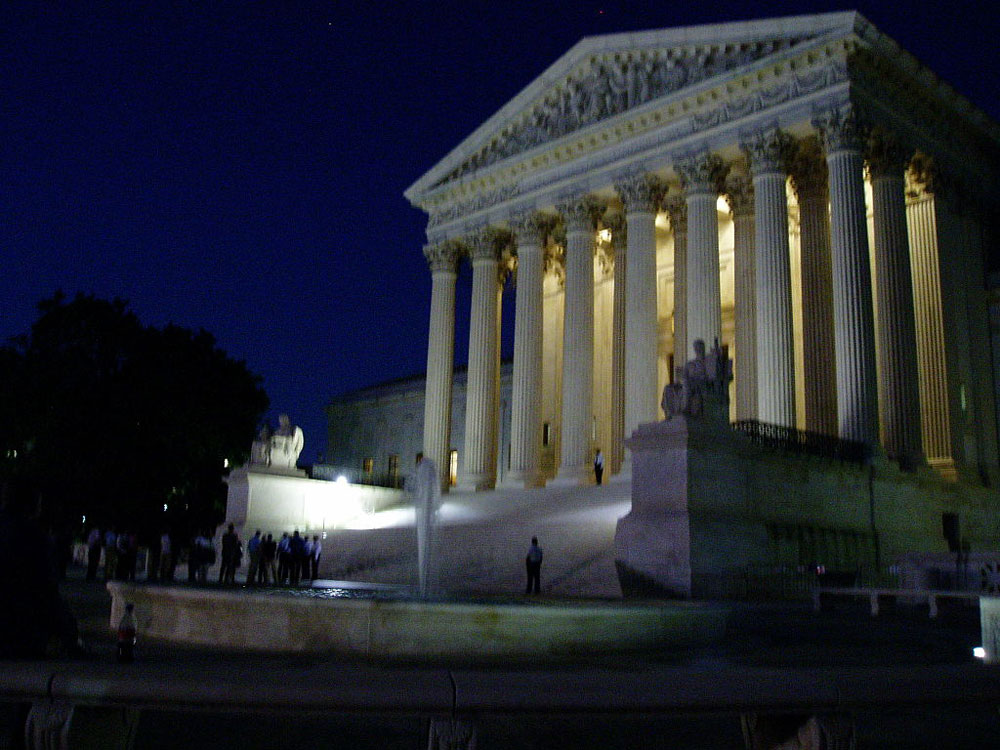
The time for celebration was extremely short, and reality has now set in for members of the reproductive rights community. Any illusion there was an ally in Chief Justice John Roberts based on his decision in the June Medical v. Russo case were crushed this week when that very case was used as the basis for reinstating and upholding some of the most onerous TRAP (Targeted Restrictions on Abortion Providers) laws by the 8th US Circuit Court of Appeals in Arkansas last week.
Included in these laws are the requirement that women pregnant by rape must notify their rapist before terminating a pregnancy, that the names of patients under age 18 must be reported to local law enforcement (and fetal tissue must be preserved and treated as criminal evidence in these cases), and that abortion providers have to spend “reasonable time and effort” acquiring a patient’s medical records for her “entire pregnancy history” before performing an abortion.
There’s more, regarding decisions about methods of disposal of fetal remains and just who gets to make those decisions. Because of this, medication abortions are not possible, as there would be no fetal remains. And to make things complete, the final law in this package bans the safest and most common procedure for second-trimester abortions.
How can this happen? Didn’t the Supreme Court just uphold abortion rights in June?
When Nonprofit Quarterly wrote about this decision, we tried to warn you of what was coming. Chief Justice Roberts never stood out as a champion of abortion rights. In actuality, he gave, in his controlling opinion in June Medical, a roadmap to gut abortion rights. Arkansas and the 8th Circuit are just following directions.
Sign up for our free newsletters
Subscribe to NPQ's newsletters to have our top stories delivered directly to your inbox.
By signing up, you agree to our privacy policy and terms of use, and to receive messages from NPQ and our partners.
Roberts was clear: The 2016 Texas case, Whole Women’s Health v. Hellerstedt, required courts to consider the medical benefits of an abortion restriction against its burdens. Not so in June Medical. That standard was overturned and now the court only need ask if the regulation imposes a “substantial obstacle” to an individual getting an abortion. As NPQ wrote when the decision was handed down in June, 2020: “What this means is that at some future date, a state could impose a two-week waiting period with three extra visits for ‘indoctrination’ about fetal rights. Under Breyer’s interpretation, this would be unconstitutional, but not necessarily so under Roberts. It might be difficult for a woman, but not totally undoable.”
A can of worms has been opened with the June Medical decision. Roberts knew just what he was doing. The follow-up by state legislatures that will pass TRAP laws and federal courts filled with eager, young, lifetime appointees looking to demonstrate their conservative understanding and interpretation of the law will create new limits on abortion access, especially for poor women and women of color. As Dahlia Lithwick and Mark Joseph Stern said, writing for Slate:
It is an engraved invitation to reviewing courts to ignore the fact that a law that purported to advance women’s health in fact did nothing of the sort. It was on its face an invitation to lower courts to return to the minimal scrutiny of Planned Parenthood v. Casey’s “substantial obstacle” language. And where Whole Woman’s Health had given the judiciary a meaningful role to play in assessing whether an abortion regulation was burdensome, the chief justice made quite plain in June Medical that “state and federal legislatures [have] wide discretion to pass legislation in areas where there is medical and scientific uncertainty.” Courts, post–June Medical, need to stand down and let states do what they will. And that is precisely what the 8th Circuit did.
So, if you are surprised by this, perhaps you should look back at what many wrote and said with great concern at the announcement of the June Medical decision. Justice Roberts was waiting for an opportunity to reassess the constitutionality of the Casey case. Not having that, this was his best option to use the Casey test as a tool to advance women’s health. In this way, Roberts is able to facilitate severe restrictions on reproductive rights in an “under the radar” way without directly overturning Roe v. Wade and may not overtly demonstrate to voters how the courts have been co-opted by the anti-choice movement.
Roberts remains above the fray, but in reality, in the midst of it. And the state of reproductive rights and women’s rights to make their own health care decisions now seem less secure than when we were celebrating the June Medical decision in June.—Carole Levine











